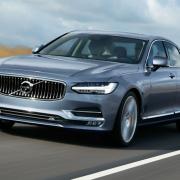Toyota’s luxury arm makes key midlife changes to the executive sector’s only hybrid hatchback, while also making it cheaper to own
Lexus has pretty much admitted that the original CT200h executive hatchback could have been better when launched in 2011.
There were highlights: premium sector’s first hatchback hybrid, plus bomb-proof Lexus build quality and reliability.
It was also the Japanese prestige marque’s first compact hatchback or front-wheel drive model in the UK, and signalled that Lexus would concentrate on petrol-electric hybrids to battle rival European premium diesels.
Lexus’ ace up the sleeve here was access to the proven reliability of the hybrid petrol-electric powertrain from its Toyota parent’s front-driven Prius, a model of similar scale to the CT200h design.
But the CT200h simply underwhelmed the market; the styling was too staid and the chassis not dynamic enough for the target market. Worse, opposition such as the Audi A3, BMW 1 Series, new-look Mercedes-Benz A-Class and Volvo V40 could rival the Lexus on the company car taxation front. Most were easier on the eye.
A radical midlife facelift CT200h, however, suggests Lexus quickly saw the reality and responded well. The CT200h now looks sharper, and rides and handles better, though still off the pace versus most diesel contemporaries.
Despite a theoretical 179bhp on tap from harnessing the 1.8-litre petrol engine and the 81bhp electric motor, the CT200h also doesn’t feel like it has the will to perform to its potential. But it is exceptionally quiet at the extremes of the motoring scale: idling locally in electric mode and cruising the motorway, though it’s not particularly economical in the latter situation.
A diesel rival might be the better option if this makes up most of your driving.
On the other hand, it looks good value and gains generous equipment upgrades on top of the usual Lexus complement. The revised line-up is also up to £1,500 cheaper than before, with prices from £20,995 and contract hire offers from £219 per month.
Lexus hopes the clincher will be far lower cost of ownership. All versions are below the 100g/km of CO2 threshold, at which road tax is payable, which means business users secure the lowest band for benefit-in-kind taxation: 10 per cent in year one. Economy is an impressive official combined cycle consumption of 78.5mpg for the S grade, 68.9mpg for other versions.
There is also a bit more much-needed panache about the car, although Lexus could do with someone like Peter Schreyer, the man who has transformed Kia’s image.
At least the revised CT200h has the new and bigger Lexus corporate ‘spindle’ grille, extending above and below the number plate and giving the car a lower, wider and more aggressive look. This is further exploited by the racier mesh-grilled F Sport version, which also gets a new rear spoiler.
Cabin quality was never an issue with the CT200h, but there have been some tweaks, including a slimline seven-inch centre console monitor, the smart looking steering wheel from the new IS, and a new shift lever for the automatic gearbox.
Mid-range Advance (£23,995) is the key model and gets parking sensors, heated front seats and the new fully integrated Lexus Navigation system as standard. n



























